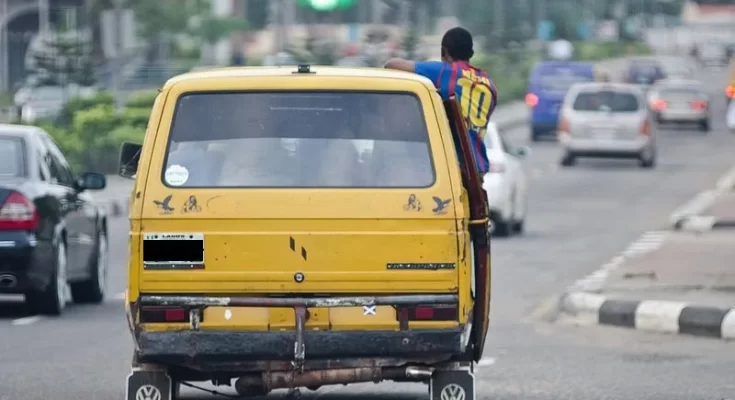In recent weeks, Abuja has witnessed a concerning surge in cases involving the theft of manhood, totalling a staggering 62 reported incidents.
To combat this alarming trend, the Federal Capital Territory (FCT) Police Command has taken swift action, impounding 10 vehicles suspected to be linked to “one chance” activities within the territory.
In light of these developments, it’s crucial for residents to learn how to identify potential “one chance” buses to safeguard their safety and well-being. An eyewitness shares his painful experience.
Tunde narrated that he got into a taxi in a Nigerian city. The taxi looked normal, and everyone felt fine at first. But during the ride, the driver suddenly took a scary turn off the main road onto a quiet path, not where they were supposed to go. This made it clear that something was wrong
He was stuck in the car with another passenger; after a short while, some people in the car started scaring them, and hurting them with dangerous weapons like cutlass, knife and sort shape object for killing, even one of men was with a gun. They wanted the passengers to give up their valuable things like money, phones, and personal stuff.
“We started dropping our valuables as they force us too soon. We were taken to lonely places where the bad people continued to be violent and mean, we even transfer all the money in our account.
Later they abandoned us and left, we found our way after trekking for so long inside a bush.” Tunde narrated.
READ ALSO: Scores injured as gunmen attack bus in Benue
The eyewitness who wanted to be helpful highlighted some ways to know a one chance bus
Unusual Routes: Be wary of vehicles that are taking routes different from the usual public transport routes. “One chance” operators often deviate from regular paths.
Overcrowding: If the vehicle is excessively overcrowded, with more passengers than usual, it could be a sign.
Aggressive Behavior: If the driver or passengers exhibit aggressive behavior, seem overly impatient, or are pressuring you to board, it’s a red flag.
Tinted Windows: Suspicion should arise if the windows are heavily tinted or if passengers seem reluctant to make eye contact.
Unregistered Vehicles: Look out for vehicles with no visible registration numbers or those with obscured or fake plates.
Inoperative Meters: In taxis, if the meter is not working or the driver is unwilling to use it, this could be a warning sign.
Sketchy Appearance: If the vehicle looks old, poorly maintained, or doesn’t have proper markings or signage, it’s a cause for concern.
No Stops: Legitimate public transport vehicles make stops at designated points. If the vehicle doesn’t have regular stops, it might be “one chance.”
Unofficial Operators: Be cautious if the driver or conductor doesn’t seem to have any official identification or uniform.
Lower Fare than usual: If the bus agrees to collect a lower Fare than it is supposed to then you should be very careful.
Tinted Windows: Suspicion should arise if the windows are heavily tinted or if passengers seem reluctant to make eye contact.
Ways to avoid One-chance vehicles
Trusted Sources: Whenever possible, use known and reputable transportation services. Ask locals or your contacts for recommendations.
Use Ride-Hailing Apps: Consider using ride-hailing apps, which often have safety features like driver and vehicle information, GPS tracking, and user reviews.
Take from a Bus Park: It is very advisable to take a bus from the park instead of getting a bus from the roadside.
Conclusion
We all hope not to ever fall prey to one-chance vehicles. Please share this with others, it may help.








